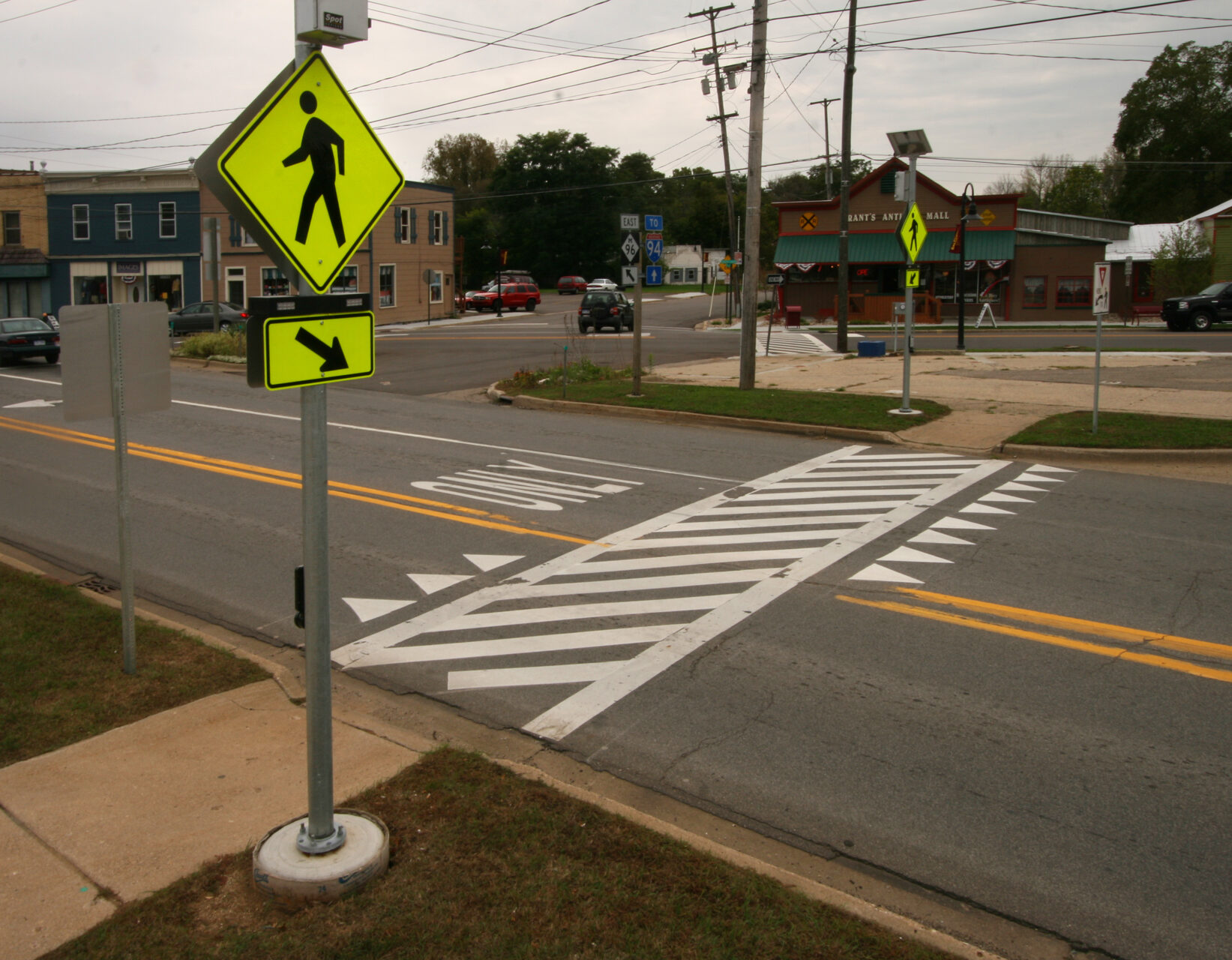This article summarizes an inspiring talk given by our traffic engineer, Ariana Jeske, PE, at the 2013 Institute of Transportation Engineers conference.
Preventative traffic engineering refers to an approach to traffic engineering and planning that prevents, rather than reacts to, dangerous situations and accidents. The key is keeping walkability in mind. The term “walkability” has surfaced recently due to increased concern over accessibility, and because walkability can increase public health, decrease vehicle traffic, and drive economic development.
Traffic engineers use complex models to justify the traffic infrastructure that guides our behavior. The “stereotypical” traffic engineer tends to focus on:
- Antiquated suburban development patterns (built for cars, not pedestrians)
- Inflexible road design standards
- An unchanging, unadaptable system
As the model of mobility changes, traffic engineers can lead the way to a safer world, rather than being “in the way.”
“It didn’t meet the warrants.”
Warrant, to a traffic engineer, means justification. To justify a traffic signal installation, a traffic engineer completes a signal warrant study using a set of guidelines outlined in the Michigan Manual of Uniform Traffic Control Devices (MMUTCD)–the manual that forms the legal basis for all the State’s signs, traffic signals, and pavement markings. Conventional warrants tend to treat pedestrians as vehicles. Rarely can traffic signals be justified solely for facilitating pedestrian movements, since signal warrants are not based on the intersection’s performance, but on detailed research from the 1970s.
So what about new projects and approaches? When a non-motorized path needs to cross a busy four-lane road, how will we know how many pedestrians will be crossing it? Pedestrian forecasting is not as developed as vehicular traffic forecasting. Often, a wait-and-see approach is taken to see if a problem develops. Isn’t there a better way?
Don’t respond, prevent.
Traffic engineers need to enter pedestrians into the equation. Pedestrians need 39% more time to cross a two-lane road than a car does, and pedestrians are ten times more likely to be fatally injured in an intersection crash than a vehicle driver.
Preventative traffic engineering, then, is the meaningful evaluation of a multi-modal mobility network to identify areas of increased risk and mitigating those risks. Traffic engineers need to recognize that pedestrians are legitimate users of public mobility systems – whether or not we design for them – and have an inherent vulnerability.
How to lead the way
- Every detail matters: Consider curb radii, pedestrian data, road width, signage, cycle lengths, parking zones, pavement markings, lighting, and bicycle facilities.
- Standards can be flexible: Use context-sensitive design. Make standards fit your projects, not the other way around.
- Use multiple sources: Use all the books on your shelf, and even look internationally for case studies and examples.
- Use your engineering judgment: Safety isn’t rocket science. Trust your instincts and prove them right.
- Be proactive and holistic: Projects should not just be a road widening, or a pavement reconstruction, or any one single facet. Evaluate safety problems, find the data out there, and integrate walkability and pedestrian safety into the planning of your transportation projects. Especially when you have funding. (In fact, adding a walkability component can sometimes get you more funding.)
Case study
It seems likely that putting a non-motorized trail crossing at a busy four-lane roadway might result in some safety issues. Here is a case study that took a more proactive approach to ensure safety.
Grand Valley Rail Trail: a major community project for Ionia and Saranac, the GVRT is an AASHTO-compliant non-motorized trail that repurposes an abandoned rail bed, including seven trestles over various water bodies.
The trail also crosses M-66 (Dexter Street) in Ionia, which averages about 15,499 vehicles per day. To determine if the estimated 100,000 yearly users of the trail would have enough time to cross the street, we conducted a pedestrian gap study, which determined how long of a window (16 seconds) a pedestrian would need to cross the street. From traffic data we found that there weren’t enough time gaps during the day for the expected volume of pedestrians to cross M-66 safely. The study helped secure funding for a pedestrian bridge across M-66/Dexter Street, which will be built next summer.

